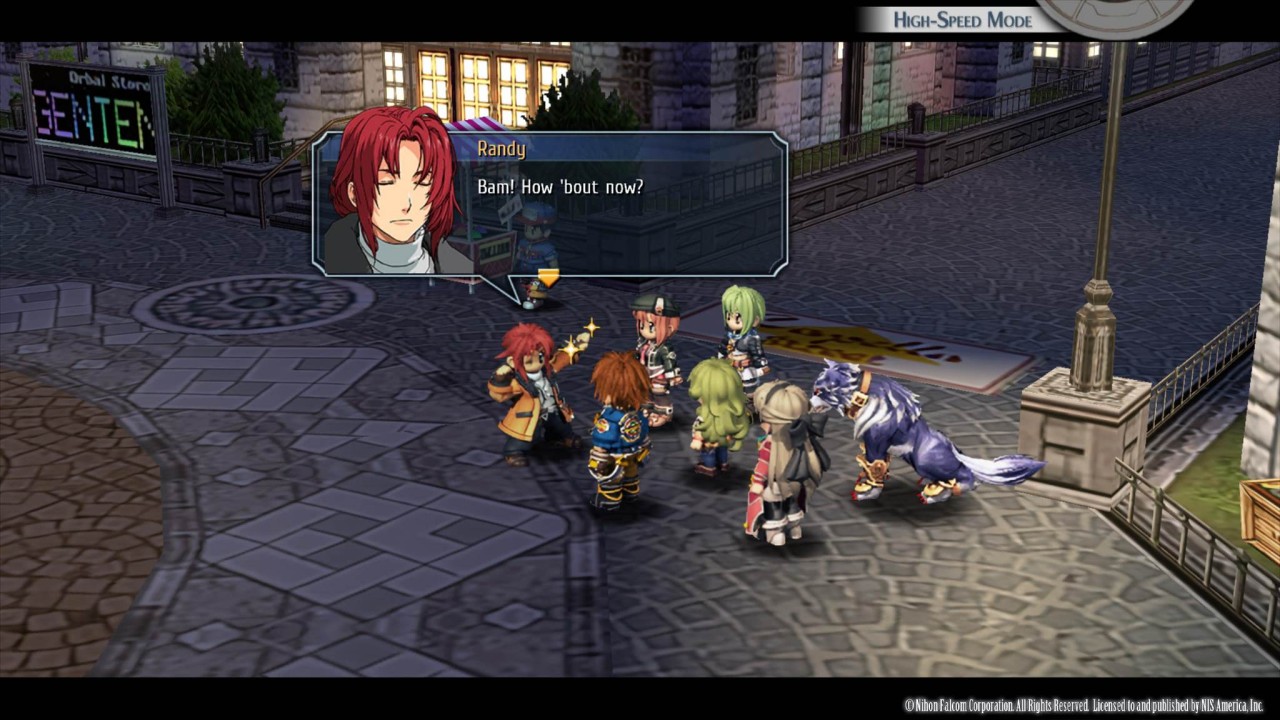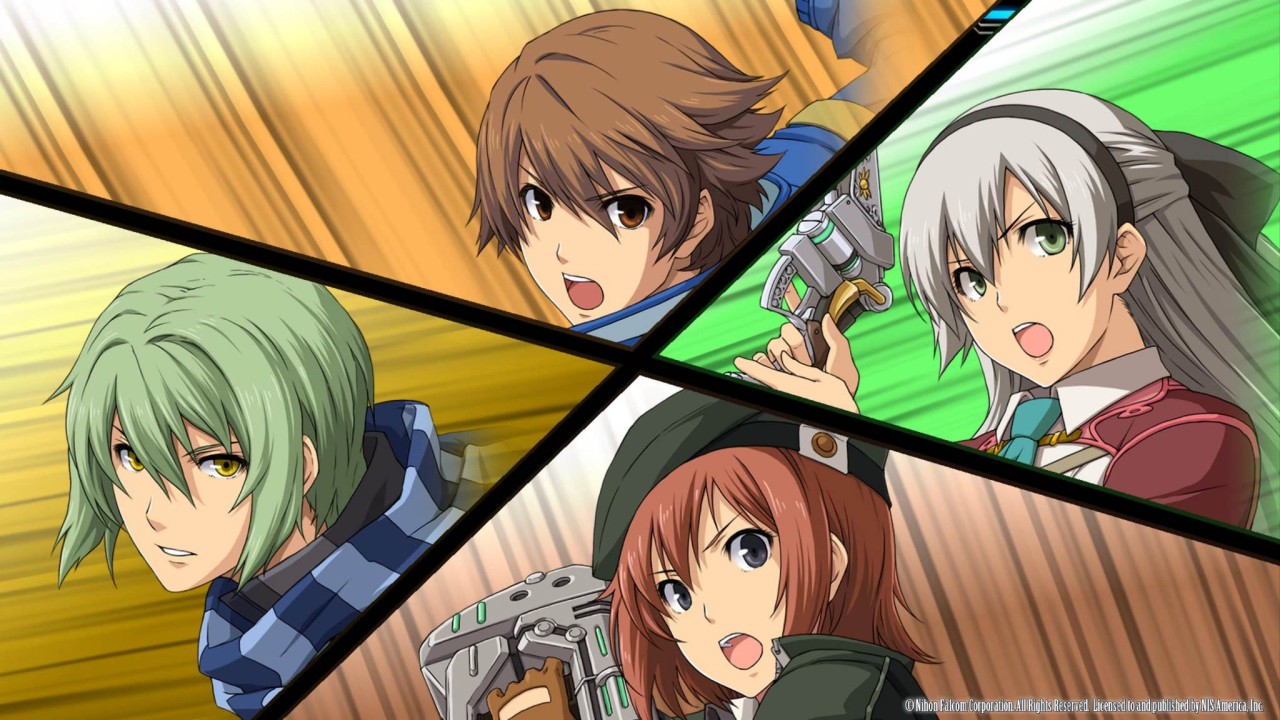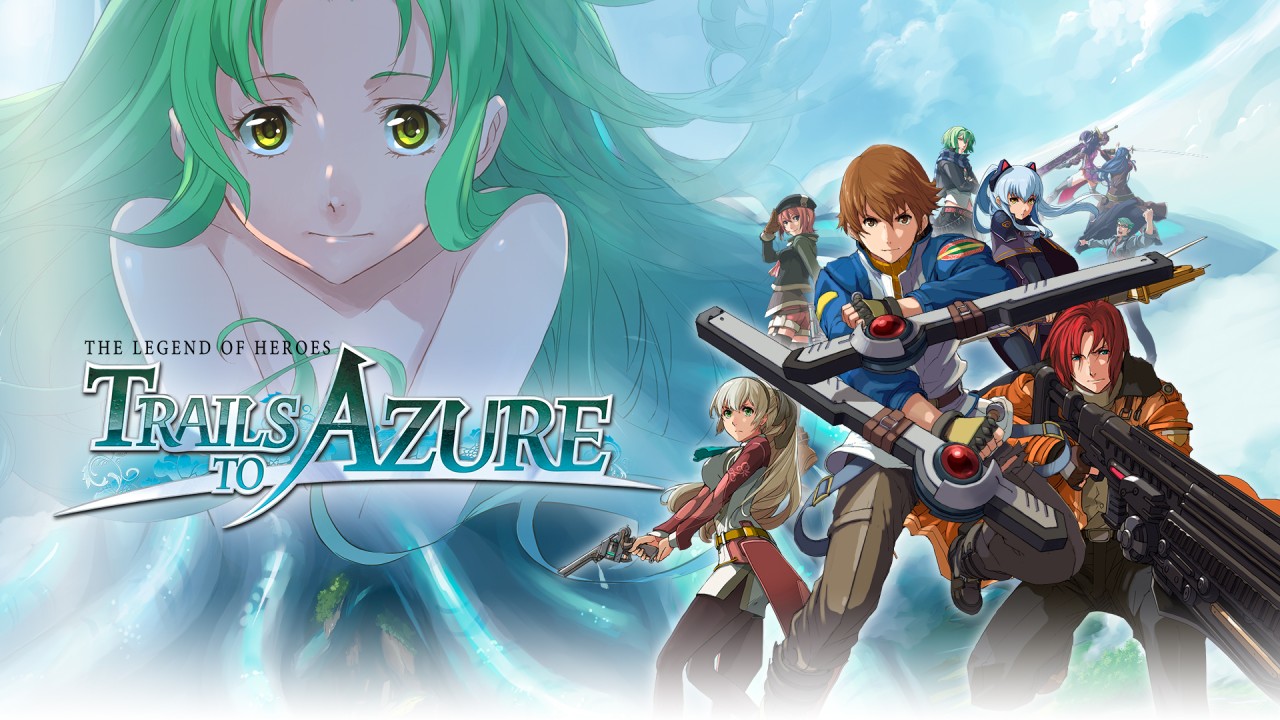I’ll get this out immediately: If you haven’t played The Legend of Heroes: Trails from Zero, you should not jump in with Trails to Azure. The Legend of Heroes: Trails to Azure is a proper sequel. While there’s a handy section in the options for recapping the events of Zero, the things that make Trails to Azure so genuinely excellent rely on you having spent that first game of the duology with these characters. If you haven’t checked out 2022’s release of Trails from Zero, click here to read my review and find out why it became one of my favourite games of not just that year but of all time.
With that out of the way, how does The Legend of Heroes: Trails to Azure stack up compared to its excellent predecessor? It became one of my most anticipated releases of 2023 immediately after finishing Trails from Zero. Having beaten it, the Crossbell Duology has cemented itself as one of, if not the greatest JRPGs I have ever played.
Big Stakes, Bigger Payoffs
Taking place a few months following the events of Trails from Zero, Trails to Azure wastes no time getting you into things. Since the end of the previous game, the Crossbell Special Support Section has grown, with two NPCs from Zero having been added to the roster. Noel Seeker and Wazy Hemisphere were featured throughout the previous game and fit into the party perfectly. Wazy, a downtown gang leader, was one of my favourite side characters in the first game. He adds a fun dynamic to the group and an air of mystery about why he joined the SSS in the first place. Noel works for the Crossbell Guardian Force but joins the team to help out following the first game’s conclusion. She’s somewhat of a foil to Wazy in the early game as she’s more disciplined, but her love of cars and sense of duty makes her endearing. These two replace Randy and Tio from the first game for a while, leaving Lloyd and Ellie as the remaining original members. Tio and Randy are busy helping out with other things for the City, which gives you a decent few hours to play with your new party members and get some wonderful character moments. Eventually, however, Randy and Tio rejoin the party, letting you swap between old and new party members depending on who fits your playstyle in combat better.

As the story progresses, the stakes increase much faster than in the first game. Trails from Zero had to do a lot of heavy lifting in its early game, with the more serious threats of its plot not showing themselves until its final chapters. Trails to Azure uses the previous game’s events to tell a much more politically driven story. Crossbell is beholden to its surrounding nations, and its new mayor wants to shake up the status quo and get Crossbell to be recognised as an independent state. The unveiling of the continent’s first skyscraper, Orchis Tower, sees leaders of several nations meet in Crossbell to decide its fate.
Two new groups have also entered the picture: a group of mercenaries named The Red Constellation and the mysterious organisation, Ouroboros. Each has their motives for being in Crossbell, and it kept me guessing until they were revealed. I like to make quick notes as I play a game for review, and for this one, it is filled with predictions, none of which were ever totally on the money, with all-caps sentences for when the reveals happened. Trails to Azure is filled with little reveals and hints at other mysteries throughout its runtime, and they’re so meticulously plotted that none of them felt out of the blue. They were all incredibly satisfying, with almost every loose thread getting tied up.
The ending did feel a little abrupt; credits just kind of happen mid-event, but there’s a nice little coda at the end, along with the promise that these characters will return. I’m a sucker for a great party in a JRPG, and not only is the SSS a wonderful cast of characters, but every single side character is also equally fun and memorable. My favourite JRPG party of all time is Persona 4 Golden, but the SSS is right up there with them.
The Legend of Heroes franchise is fairly unique in the JRPG world in that it tells an expansive, complex story across multiple games. You’re okay to jump in at the start of any of its 3 arcs, but you’ll get so much more from having played them all. It’s a lot to ask of players, but it seems worth it. Several moments in Trails from Zero and Trails to Azure that would hit much harder if I’d played the Trails in the Sky series. I’m eager to get into the Trails of Cold Steel franchise now, knowing that characters and plot points from the Crossbell Arc carry over to those games. It’s incredibly ambitious.
But, as I said, these games are long. Thankfully the high-speed mode returns from Trails from Zero, and it really does help. I managed to beat every quest in the game (I followed a spoiler-free guide, these games have a lot of optional, missable events and quests. I didn’t want to miss a thing), and my final playtime was around ~48 hours, playing basically the entire time in high-speed mode. It’s a really convenient feature that likely shaved up to 30 hours off my playtime.
Master Those Arts
In terms of gameplay, combat is the bulk of it and remains mostly unchanged from its predecessor. The AT Battle system returns, giving you a turn order to plan your next moves. Orbments and Quartz let you mix and match various elemental stones to give characters different Arts to use in battle. It’s highly customisable, so you can tailor each party member to suit any role. By the end of my playthrough, Lloyd had an evasion stat that exceeded 100%, meaning only specific attacks could even hurt him. It’s not afraid to let you experiment, and that’s refreshing. On normal difficulty, the combat is never overly challenging while still remaining engaging and fun. As long as you fight every enemy in your path between quests, I didn’t find a need for extra grinding to bridge a level gap. It offers two higher difficulties, one of which it recommends for new game plus playthroughs, and it asks a lot more from you in terms of battle tactics and party equipment.

Two new additions to combat in this game are Master Quartz and Master Arts. Each character can equip any Master Quartz and it will alter their stats and provide some passive bonuses, like a strength increase for the first few turns of battle. Master Quartz gain experience as you use them, levelling from 1-5. Each level improves the stat increases and passive effects of the Master Quartz, and upon hitting level 5, you’ll unlock its Master Art. These are powerful, continuous effects that provide buffs to your allies at the cost of being able to use any other Arts while it’s active. I’ll be honest: I never used any Master Arts I unlocked. They take a lot of XP to get to level five, and by the time I got any Master Arts, I already had my characters built in a way that I didn’t need the added effects they’d give. I imagine that in higher difficulties the Master Arts are incredibly helpful, but I got by just fine without them.
Burst Mode is the other main new feature for Trails to Azure’s combat, and it’s a welcome one, with one major caveat: it’s only available during specific story moments. When you’re in a climactic story section, a blue bar appears in the top right of your HUD during battle. You can fill the bar by attacking or using certain items. When the bar fills, you can activate Burst Mode. This gives you a few uninterrupted turns with 20% extra attack power, the ability to interrupt charging enemy Arts, and all of your Arts act instantly. It’s especially helpful in the later chapters, letting you turn the tides against some of the endgame bosses.
I get the idea of limiting it to fixed story points; it adds an element of drama to a fight. If you’re having a tough time, you can use it to get yourself out of a potentially fatal position. It probably would become very exploitable if it was available at all times, but the game already lets you overpower your characters, so it feels like an odd choice, all things considered. I definitely used it more the further into the game I got, however. It felt like Burst Mode was available a lot more in the final chapter, so it might just be that the developers didn’t think it was needed so much early on. Either way, it’s a helpful tool in the belt, just one that you don’t have at all times.

Port Report
Much like Trails from Zero, Trails to Azure on the PS4 is a barebones port. It’s purely a localized port in text only. The PC and Switch ports for Trails from Zero had a host of updates that, for whatever reason, didn’t make it to the PS4 version. Higher resolution textures, dynamic lighting, autosave, and speed multipliers for the high-speed mode. I’m not 100% sure if the Trails to Azure Switch/PC versions maintain these features, but I can’t see why they wouldn’t. If that’s the case, I’d suggest you pick them up on those platforms, if you can. Much like in my Trails from Zero review, the fact those features weren’t there didn’t lessen my experience. I had a smile on my face for practically the entire runtime. Yes, some textures are definitely blurry (most egregious when characters point out how great the view from the top of Orchis tower is, only to show a really low res JPEG) and autosave would have been nice, but I came away from Trails to Azure so incredibly satisfied that I couldn’t possibly complain.
The Legend of Heroes: Trails to Azure takes everything positive from its predecessor and raises the stakes significantly. It takes beloved characters, fleshes them out further and pays off every single thread it dangles throughout the two titles. It is so ambitious with its plot and delivers it effortlessly. Combat is fun, engaging and highly customisable. The Crossbell Arc deserves to be mentioned alongside the titans of the genre. If you are a JRPG fan and you’ve got the time to play them, these titles should be mandatory.

The Legend of Heroes: Trails to Azure is available March 14th (USA)/March 17th (EU) on PlayStation 4 (review platform), Nintendo Switch, and PC.
Developer: Nihon Falcom
Publisher: NIS America
Disclaimer: In order to complete this review, we were provided with a promotional code from the publisher.
For our full review policy, please go here.If you enjoyed this article or any more of our content, please consider our Patreon.
Make sure to follow Finger Guns on our social channels. Twitter, Facebook, Twitch, Spotify or Apple Podcasts – to keep up to date on our news, reviews and features.

COMMENT
I bought it day 1, still haven’t finished the last one, but I’ve been collecting up the entire series, and savoring each one 🙂